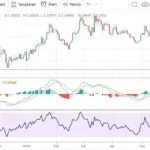Open banking is reshaping the financial landscape by opening up access to banking data and services through secure application programming interfaces (APIs). It represents a major step toward transparency, innovation, and customer empowerment — enabling users to share their financial data with third-party providers (TPPs) for personalized financial services. However, while open banking offers immense opportunities, it also presents significant challenges that must be addressed for its full potential to be realized.
Opportunities in Open Banking
1. Enhanced Customer Experience
Open banking gives customers control over their financial data, allowing them to connect various financial apps and services for a seamless experience. From budgeting tools to investment management apps, customers can enjoy personalized solutions tailored to their unique financial behaviors and needs.
2. Increased Competition and Innovation
By lowering entry barriers, open banking enables fintech startups and non-traditional players to compete with established banks. This competition drives innovation, resulting in better services, lower costs, and more choices for consumers. For example, payment initiation services and instant loan approvals are becoming increasingly popular thanks to open data access.
3. Financial Inclusion
In many emerging markets, open banking plays a crucial role in improving financial inclusion. With the ability to access and analyze alternative data—such as mobile payments or utility bills—lenders can assess creditworthiness for individuals who lack traditional banking histories, thus expanding access to credit and financial services.
4. Data-Driven Insights for Businesses
For banks and financial service providers, open banking unlocks new opportunities in data analytics. By leveraging shared data (with customer consent), institutions can offer better risk management, more accurate credit scoring, and personalized marketing strategies that enhance customer loyalty.
Challenges Ahead
1. Data Privacy and Security
As open banking involves the sharing of sensitive financial data, security remains the biggest concern. Ensuring that APIs are well-protected from breaches and that customers’ data is shared only with trusted third parties is essential to maintaining public confidence in the system.
2. Regulatory and Compliance Issues
Different countries have varying regulatory frameworks for open banking. While regions like the EU and the UK have clear guidelines under PSD2, other markets are still developing their frameworks. This lack of global standardization creates complexity for banks and fintechs operating across borders.
3. Consumer Awareness and Trust
Many consumers are still hesitant to share their financial data due to a lack of understanding or trust in new digital platforms. Building awareness and demonstrating the value and safety of open banking will be crucial to increasing adoption.
4. Technological Integration
Traditional banks often struggle to adapt legacy systems to modern API-based infrastructures. Integrating new technologies securely and efficiently requires significant investment and collaboration between banks and fintech providers.
The Road Ahead
The future of open banking lies in striking the right balance between innovation and regulation. As technology evolves, open finance—the next phase of open banking—will extend data sharing beyond bank accounts to include insurance, pensions, and investments. This broader ecosystem could redefine how individuals and businesses interact with financial services.
However, success will depend on strong cybersecurity measures, clear governance frameworks, and continued collaboration between regulators, banks, and fintech innovators.
Conclusion
Open banking represents both an opportunity and a challenge. It has the potential to democratize finance, foster innovation, and enhance customer empowerment. Yet, its success depends on trust, security, and effective regulatory oversight. As the global financial sector continues to evolve, open banking will remain a key pillar of the digital finance revolution—unlocking new possibilities for consumers and businesses alike.















